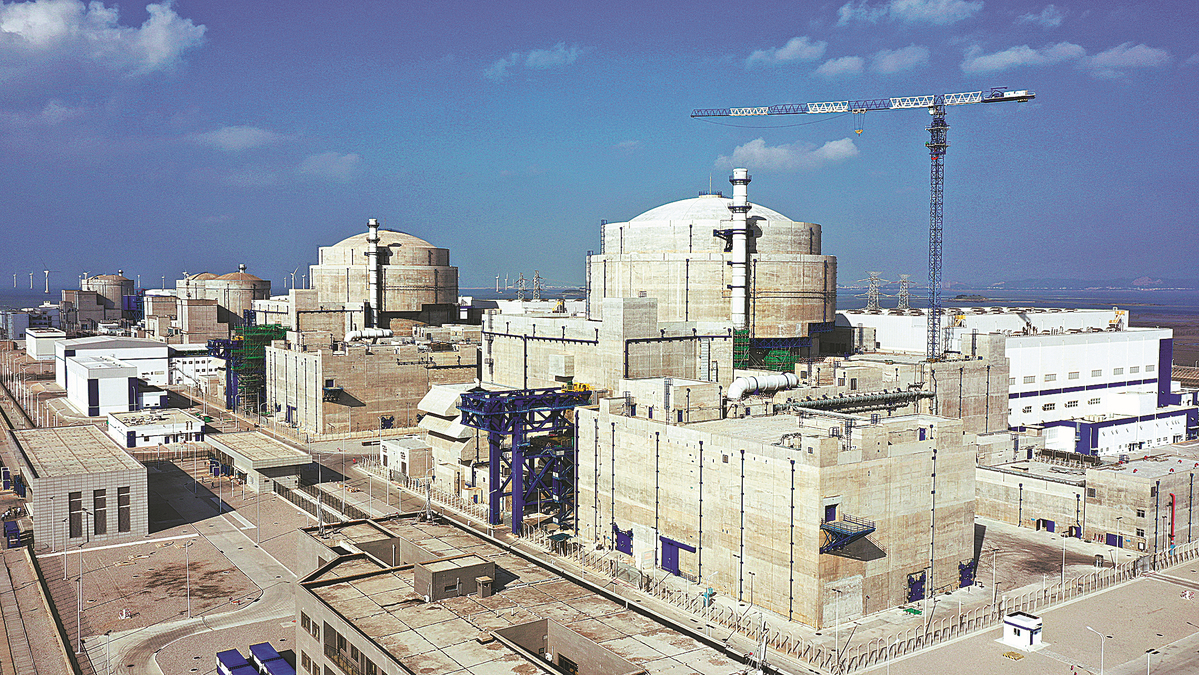Nuclear engineer powers nation's growth with wholehearted contribution to Hualong One


Xing and his team have since then been ramping up efforts on China's independent nuclear power technology and promoting the transformation from experimental facilities to industrial-scale demonstration reactors. The achievements garnered by years of R&D helped China master its own technology, and created a comprehensive chain from basic scientific research to equipment manufacture.
After completion of the Daya Bay nuclear power plant, China started construction of the second largest commercial nuclear power plant in Shenzhen, Guangdong province, the Ling'ao nuclear power plant. It implemented designs and construction similar to those of the Daya Bay plant, which was based on a French pressurized water reactor technology. But Ling'ao had its civil design implemented by China for the first time.
The Ling'ao phase two nuclear power plant, where Xing served as the chief designer, is the first 1,000-megawatt nuclear power plant domestically designed by China, as well as the third commercial nuclear power plant in Guangdong.
Unlike the former two plants, Ling'ao phase two sees Chinese companies taking a major role in its construction, as China was at that time planning to boost nuclear power development to meet the country's surging demand for electricity, especially for the regions at the front of opening-up.
The plant, which included more local participation than its predecessor in Daya Bay, saw its first unit connect to the grid in 2008-another milestone for China's nuclear power development.
However, things did not always go as planned. After the Fukushima nuclear accident in 2011 in Japan, China had, like many other countries, suspended the approval of nuclear power projects for some time.
"However, a 'pause button' does not mean a suspension of nuclear power development in China, but a higher standard for nuclear power technologies," Xing said.
Xing and his team then started the independent development of China's third-generation nuclear power brand ACP1000, which finally led to today's Hualong One technology that meets much higher safety standards and can resist potential hazards including earthquakes, typhoons and an airplane crash.
From CNP1000 to CP1000, and ACP1000 to Hualong One, Xing and his teams have conquered numerous challenges, breaking through bottlenecks and consistently improving the safety level and economic efficiency of China's domestically developed reactor design during the past few decades.
CNNC began construction of Hualong-One demonstration projects at its Fuqing site in Fujian province in May 2015 and its two units in December the same year. Fuel loading has started at the second unit using Hualong One technology in November after the first unit entered commercial operation and started generating electricity for sale in late January. The first unit has generated more than 7 billion kilowatt-hours of electricity as of November, CNNC said.
Xing has also been actively calling for the mass production of Hualong One reactors, saying that the safe, technically mature and economically competitive technology is key to reducing air pollution caused by coal-fired power generation and can help the nation meet its carbon goals.




































